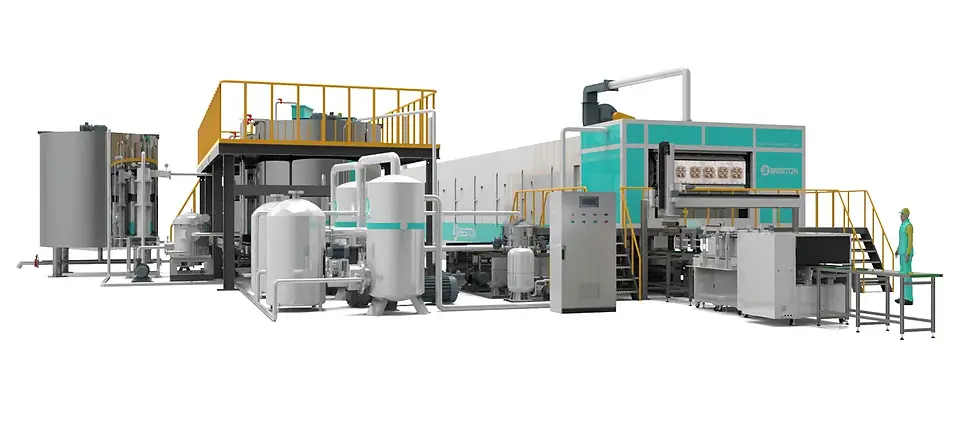How an Industrial Packing Machine Enhances Eco-Friendly Packaging
- june11433
- May 20
- 2 min read
The global push for sustainable operations has intensified the need for efficiency-driven, low-waste solutions in the packaging industry. At the center of this evolution is the industrial packing machine—an automated system designed not just for volume and speed but increasingly for ecological stewardship. These machines play a pivotal role in reducing material usage, lowering energy demands, and enabling environmentally responsible packaging workflows.
Precision-Driven Material Utilization
An industrial packing machine is engineered for accurate dosing, cutting, and sealing, which significantly reduces material overuse. Unlike manual packing methods that often lead to irregularities and surplus consumption, the machine follows precise specifications to ensure every package uses only the amount of material necessary. This optimized material application leads to fewer offcuts and rejects, minimizing solid waste at the source.
Advanced sensors and weight-based calibration systems enhance this accuracy further. By adjusting the packaging format in real-time, the system reduces film, paper, or tray wastage—particularly beneficial when using biodegradable or recycled substrates that may have cost or supply constraints.

Compatibility with Sustainable Materials
Modern pulp molding machine technology accommodates a broad spectrum of eco-friendly materials, including molded fiber trays, recyclable films, and compostable bioplastics. Unlike legacy systems that were limited to conventional plastic-based mediums, these machines are equipped with adaptive tension controls, thermal sealing heads, and humidity compensation modules.
This capability ensures that packaging lines can transition to greener alternatives without sacrificing operational throughput or product safety. It also enables producers to meet regulatory standards and consumer expectations for environmentally safe packaging.
Reduced Energy Consumption
Energy-efficient components are now a standard feature. Servo motors replace traditional pneumatic systems, and heating elements operate under intelligent temperature modulation. These features drastically lower electricity requirements without compromising performance.
In high-speed applications, an industrial packing machine utilizes variable frequency drives (VFDs) to modulate energy usage dynamically based on real-time workload. This energy agility allows factories to minimize carbon emissions associated with packaging processes, contributing directly to sustainability metrics and ESG reporting.
Minimized Human Error and Waste
Automation reduces human dependency and the inconsistencies that accompany manual handling. With controlled environments and repeatable operations, the chance of packaging defects is significantly diminished. Fewer reworks and less product damage translate to lower material and product waste over time.
Moreover, the packaging process becomes more sanitary and less waste-prone, especially in food, cosmetics, and pharmaceutical applications, where contamination can lead to large-scale product disposal.
End-of-Line Sustainability Integration
Today's industrial packing machine systems often include built-in mechanisms for secondary packaging optimization. Whether it's carton dimensioning, pallet pattern calculation, or automated shrink-wrap reduction, these machines support volume-efficient logistics. Reducing space during transport directly correlates with lower fuel usage and emissions across the distribution chain.
Many systems also allow for real-time tracking of material usage and energy input, providing actionable data to streamline further sustainability efforts.
Conclusion
The industrial packing machine is more than a tool for high-output packaging. It is an enabler of sustainable manufacturing, combining intelligent automation with environmentally aligned practices. By reducing waste, accommodating sustainable materials, and lowering energy demands, it supports the broader transition to a circular economy in packaging operations.




Comments